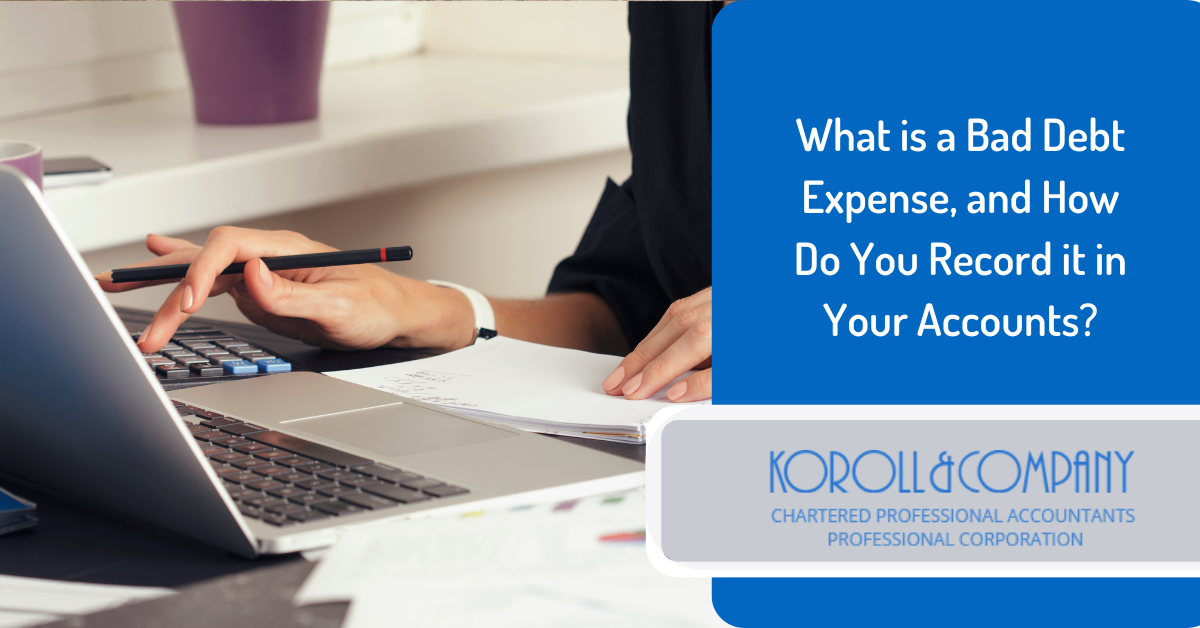 When a customer buys goods or services and is not required to pay for it until a later date, you are extending credit to that customer. Normally, this credit is paid off in full within a designated time frame.
When a customer buys goods or services and is not required to pay for it until a later date, you are extending credit to that customer. Normally, this credit is paid off in full within a designated time frame.
But sometimes, a customer is unable to pay an outstanding invoice due to bankruptcy or other financial problems. When you have exhausted all means of collecting it, this unpaid credit becomes a bad debt expense.
Bad debt expenses are an unfortunate reality of extending credit to a customer. While the hope is that your business never has to deal with it, if you do, you need to know how to account for the bad debt in your accounting records.
How to record bad debt expense
You have two options for recording a bad debt expense. The first is a direct write-off. The second is an allowance.
Direct write-off
Using the direct write-off method, you can account for bad debt expenses at any time during the year. To record this transaction, you will need to make a single double journal entry.
Once you determine the amount is uncollectable and you have exhausted all means of collecting it, make the following journal entry:
Debit Bad Debt Expense 000
Credit Accounts Receivable 000
This method for recording bad debt expense makes the most sense when you are using cash basis accounting. This means that you record your revenue and expenses when the actual payments are received or made.
Allowance
Alternatively, you can use the allowance method to record bad debt expenses. When using this method, you record all bad debt at the end of your tax year.
To start, you will have to create a contra asset account called Allowance for Doubtful Accounts or Allowance for Bad Debts that will go against your Accounts Receivables. This will act as a reserve for bad debt. It is a permanent account that will show up on your financial statements.
Next, you will have to determine a percentage of invoices that you believe will not be paid that year. To do this, consider historical trends, your company's credit policy and your experience with your customers.
The two main methods for estimating the Allowance for Doubtful Accounts amount are:
- Percentage of Credit Sales – Use a single percentage on all credit sales for the period (i.e. all sales are 2% uncollectible)
- Accounts Receivables Aging – Apply a specified percentage to date ranges with older invoices having a greater percentage of its sales being uncollectible (i.e. 0 to 30 days = 1% uncollectible, 31 to 60 days = 2% uncollectible, 61 to 90 days = 3% uncollectible, 90+ days = 5% uncollectible)
Once you have your amount, you would then make the following journal entry:
Debit Bad Debt Expense 000
Credit Allowance for Doubtful Accounts 000
Example – you have $100,000 worth of credit sales during the year. You estimate, based on past experience and your credit policy, that 2% of these sales ($2,000) will be uncollectible. Your year-end journal entry is:
Debit Bad Debt Expense 2,000
Credit Allowance for Doubtful Accounts 2,000
If there’s already a credit balance in the Allowance for Doubtful Accounts, then you would adjust the account.
To illustrate, let’s say there was a credit balance in Allowance for Doubtful Accounts of $200. In this case, your above entry would be for $1,800.
Debit Bad Debt Expense 1,800
Credit Allowance for Doubtful Accounts 1,800
On the other hand, if there was a debit balance, you would have to add it to the uncollectible amount.
For example, if Allowance for Doubtful Accounts had a debit balance of $100, you would have to enter $2,100.
Debit Bad Debt Expense 2,100
Credit Allowance for Doubtful Accounts 2,100
If a doubtful debt becomes a bad debt, you would have to make the following journal entry:
Debit Allowance for Doubtful Accounts 000
Credit Accounts Receivables 000
If you write off an amount and then the customer pays you, you will have to reverse this entry.
Debit Accounts Receivables 000
Credit Allowance for Doubtful Accounts 000
You would then create a journal entry to record the amount paid, like you would with any payment received:
Debit Cash 000
Credit Accounts Receivables 000
You should use the Allowance method if you use the accrual method of accounting, International Financial Reporting Standards (IFRS) and generally accepted accounting principles (GAAP).
Come tax season, you can deduct your Bad Debt from your taxes.
For help recording your bad debt expenses and deducting them on your tax return, contact us today.






